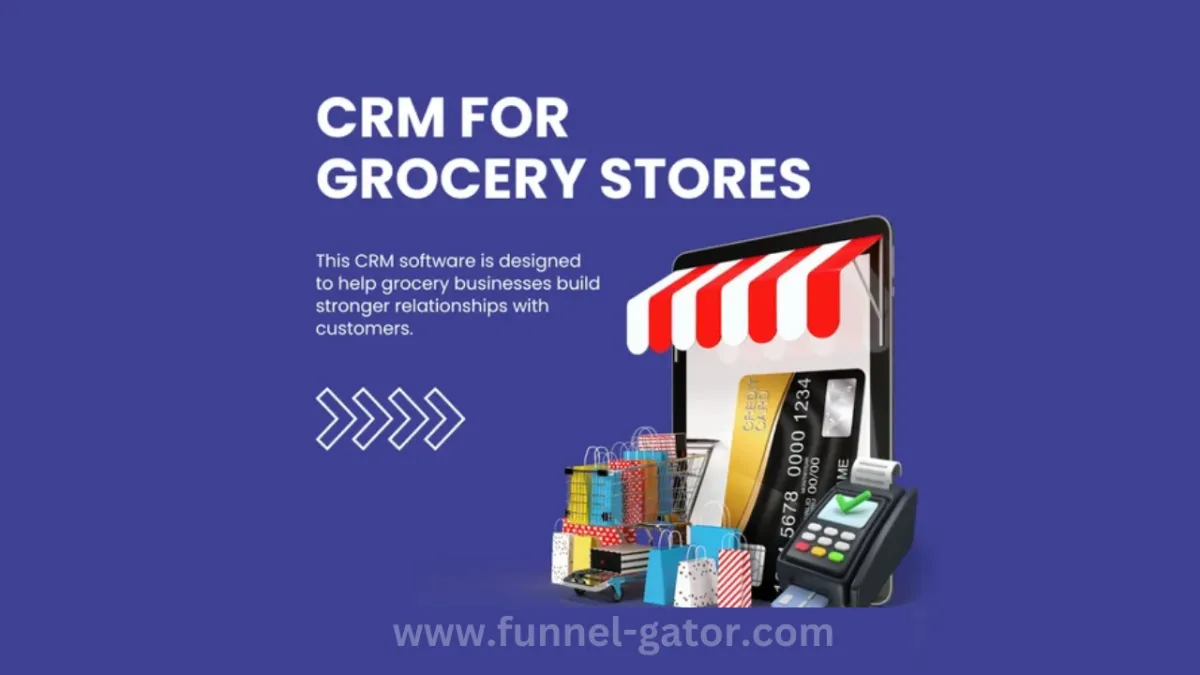
Why Every Grocery Store Needs a CRM Software: A Friendly Guide to Smart Retailing
Imagine you walk into your neighborhood grocery store, and the cashier greets you by name, remembers your favorite brand of cereal, and offers you a discount on your usual shopping day. Feels nice, right?
Well, that’s not just great customer service—it’s smart customer relationship management in action. And that’s exactly what CRM software for grocery stores is designed to do.
In this guide, we’ll break down how this technology works, why it’s becoming essential in the retail world, and how you can get started with it.
✅ What is CRM Software?
Let’s start with the basics.
CRM stands for Customer Relationship Management. At its core, it’s a digital tool that helps businesses manage interactions with customers—think of it as a modern version of the little black book where shop owners used to write down their loyal customers’ preferences.
CRM software for grocery stores goes a step further. It helps you:
Track purchases and shopping habits
Send personalized offers and discounts
Manage loyalty programs
Gather customer feedback
Analyze buying trends
It takes your grocery store from reactive to proactive.
📦 Real-World Example: Meet Sam
Let’s talk about Sam. He runs a mid-sized grocery store in a suburban neighborhood.
For years, Sam operated the old-school way—excel sheets, handwritten notes, and “gut feelings” about what customers wanted. He was doing fine… until a new supermarket chain opened two blocks away with flashy promotions and a sleek mobile app.
Feeling the heat, Sam decided to try a CRM software tailored for grocers. Within three months:
He segmented his customers by shopping habits.
He introduced a birthday discount program.
He sent out weekly offers via SMS and email.
He saw a 25% increase in returning customers.
What changed? He wasn’t guessing anymore. He was using data—and that’s the power of CRM software for grocery stores.
🧠 Why Grocery Stores Should Use CRM Software
Here’s a breakdown of the biggest benefits:
1. Customer Loyalty and Retention
Using a CRM platform, you can track shopping frequency and send timely rewards, such as:
“Buy 5, Get 1 Free” offers
Points-based rewards
Anniversary or birthday gifts
This helps turn one-time buyers into loyal, returning customers.
➡️ LoyaltyLion and Smile.io are great examples of loyalty platforms that can be integrated into your CRM.
2. Personalized Marketing
No more generic flyers or “spray and pray” email campaigns.
CRM systems allow you to segment your customer base. For example:
Families with young kids → diaper and snack deals
Vegans → plant-based product offers
Seniors → pharmacy discounts and delivery options
This kind of targeting increases open rates, click-throughs, and conversions.
3. Inventory and Sales Insights
A good CRM tool integrates with your POS system, helping you know:
What items sell fastest
What time of day is busiest
What products aren’t moving
You can then order smarter, reduce waste, and improve margins.
🛠️ Features to Look for in a Grocery Store CRM
When shopping for a CRM solution, make sure it includes:

For a full comparison of CRM features, check out this HubSpot guide.
🪜 Step-by-Step Guide to Getting Started
So, ready to modernize your grocery store? Here’s a step-by-step guide to launch your first CRM system:
Step 1: Identify Your Needs
Ask yourself:
Do I want to improve loyalty?
Do I want better data on sales?
Do I need email/SMS marketing?
Choose a CRM that matches your goals.
Step 2: Pick the Right Software
Here are a few CRM tools for grocery stores to consider:
Zoho CRM – Affordable and scalable
Lightspeed Retail – Built-in POS and CRM
Freshsales – Easy automation and analytics
Step 3: Train Your Team
Make sure your staff knows how to:
Add new customers
Use loyalty features
Access customer insights
Investing in training avoids confusion and unlocks the CRM’s full potential.
Step 4: Launch a Campaign
Start simple! Maybe try:
A "Welcome Discount" for new sign-ups
A "Thank You" email after each purchase
A weekend promo for frequent shoppers
Track the results and adjust as you learn.
🧾 Quick Tips for Success
Use customer birthdays to send surprise deals 🎂
Encourage sign-ups with in-store QR codes
Automate abandoned cart emails for online shoppers
Offer personalized coupons based on buying habits


